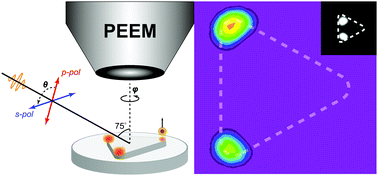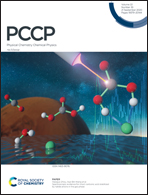Quantitative insights into non-uniform plasmonic hotspots due to symmetry breaking induced by oblique incidence†
Abstract
Localized surface plasmon resonance draws great attentions mainly due to its enhanced near electric field, i.e., plasmonic hotspots. The symmetry breaking via oblique incidence of light is predicted to influence the intensity of plasmonic hotspots. However, relevant experimental investigation in quantitative comparison with theory is still lacking. Here, we visualize the polarization-dependent plasmonic hotspots of a triangular Ag nanoplate through oblique-incidence photoemission electron microscopy (PEEM), revealing a non-uniform near-field enhancement. Under oblique incidence, two bright spots and one dark spot were identified in the polarization-averaged PEEM image, different from that for normal illumination where bright spots with equal intensity are anticipated. In polarization-dependent PEEM images, plasmonic hotspots appeared at specific corners of a triangular Ag nanoplate, and rotated in a manner consistent with the rotation of polarization angle. The experimental intensity maps of the photoelectron were well reproduced by simulation on a quantitative level. This work provides a quantitative understanding of how the orientation of incidence light relative to a plasmonic antenna influences the near-field enhancement.



 Please wait while we load your content...
Please wait while we load your content...